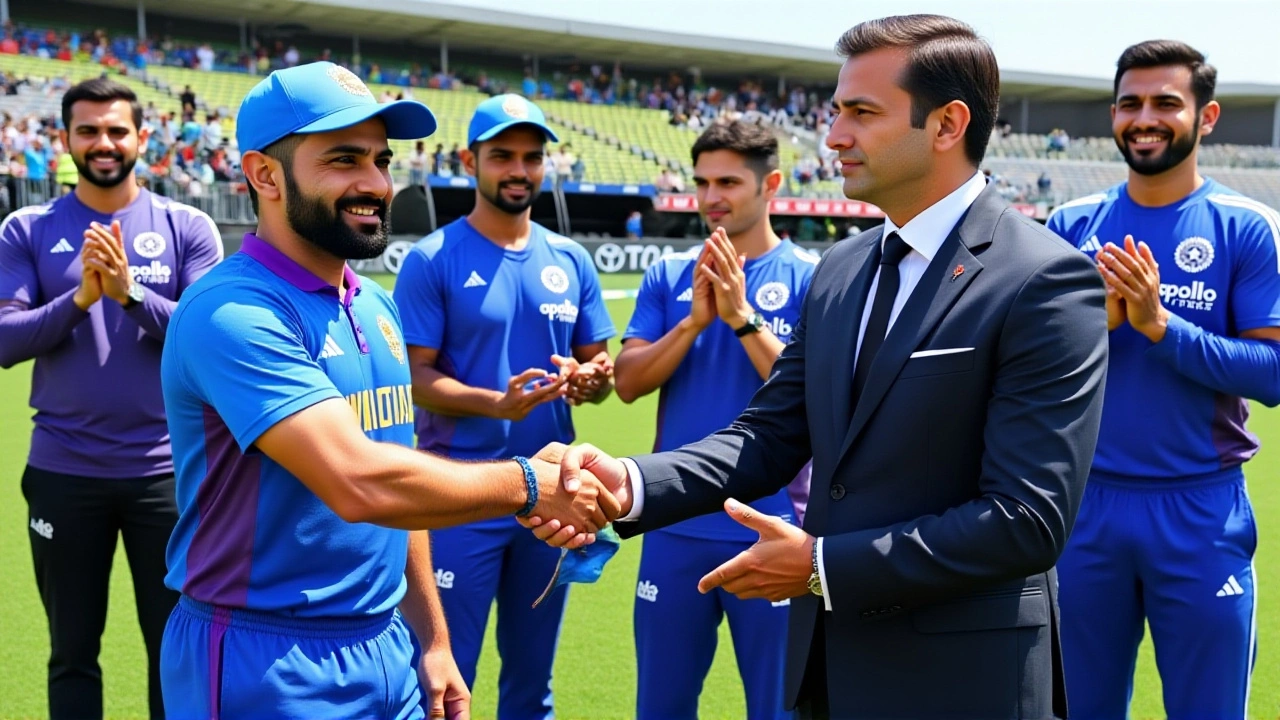When Mohammad Kaif, former Indian cricketer, posted his analysis on YouTube on 22 November 2024, the cricket‑watching world braced for a scathing verdict. Kaif, who earned 136 caps for the national side between 1999 and 2008, didn’t hold back – he labelled Nitish Kumar Reddy "not a complete bowler", slammed Harshit Rana for a "disappointing" spell, and warned that Washington Sundar was "struggling to make an impact on this pitch". The criticism landed just as India fell to a 57‑run loss against Australia at Optus Stadium, Perth in the opening ODI of the five‑match Border‑Gavaskar TrophyPerth, Western Australia.
Kaif's Blast on India's Bowling Unit
Kaif’s 15‑minute video cut straight to the chase. "The team had far too many part‑timer options," he said, pointing to the trio of pace‑bowlers – Mohammad Siraj, Harshit Rana and Arshdeep Singh – and a spin contingent of just Sundar and Axar Patel. "Nitish Reddy is not a complete bowler, and Sundar also struggled on this surface," he added.
He didn’t stop at the players. The former captain took aim at Shubman Gill, who was leading the side in Rohit Sharma’s absence. "Choosing not to play Kuldeep Yadav, who is truly a wicket‑taker, was the biggest mistake," Kaif argued. "You can’t rely on Bumrah or Shami when they’re not in the XI – quantity over quality hurt us."
What Went Wrong on the Perth Pitch?
Perth’s Optus Stadium is notorious for a fast, bouncy wicket that rewards genuine seamers. On the day, the surface offered extra bounce but also a bit of lateral movement, something Shane Warne (the Australian legend turned commentator) described as "juicy for the pacers". India, however, fielded a middle‑order spinner in Sundar while leaving out the seasoned off‑spinner Ravindra Jadeja and leg‑spinner Ravichandran Ashwin.
Australia seized the advantage. Josh Hazlewood claimed 3/28, and Mitchell Starc later ripped through the middle order for 2/34. In contrast, India’s most economical figures came from Siraj (2/45) and Arshdeep (1/38). Sundar’s figures – 0/56 off 9 overs – epitomised Kaif’s point about his struggle.
Selection Controversy: Gill, Kuldeep and the Missing Wicket‑Taker
The crux of Kaif’s rant was the exclusion of Kuldeep Yadav. The left‑arm wrist‑spinner has a career strike rate of 21.8 in ODIs and was the leading wicket‑taker for India in the 2023 World Cup with 22 scalps. Yet Gill opted for a ‘balanced’ attack, perhaps hoping to bolster the lower order with Reddy’s all‑round skills.
Critics like former India coach Rahul Dravid later echoed Kaif, noting that "a rookie seamer cannot replace a proven match‑winner in those conditions". Meanwhile, Australian coach Andrew McDonald praised India’s ambition but warned that "without a genuine strike bowler, you hand the game to the opposition".
Expert Opinions and the Aftermath
Just days before the Perth clash, former India batsman Kris Srikkanth released a tactical video. He suggested playing Reddy as the third seamer while keeping Kuldeep Yadav at nine, and moving Sundar to the eighth slot. "Even with three spinners you can still fit Reddy in as a genuine pacer," Srikkanth argued. The actual XI, however, left Reddy out of the main pace trio and forced Sundar into the only spin slot.
The defeat sparked a social‑media storm. Fans quoted Kaif’s line "You cannot just hope to win based on Bumrah or Shami playing" as a rallying cry for a more aggressive selection policy. Within 24 hours, the BCCI released a statement saying they would review the bowling lineup ahead of the next ODI in Melbourne.
Looking Ahead: Next ODIs and What India Must Fix
India travels to Melbourne for the second ODI on 26 November 2024. The pitch there is expected to be slower, favouring spinners. That could be a chance for Kuldeep Yadav to make a comeback, especially if the team decides to drop either Reddy or Rana.
Analysts predict three key adjustments: (1) reinstate a proven wicket‑taking bowler – either Kuldeep or a fit‑again Jasprit Bumrah if he recovers from his minor niggle; (2) give Sundar a clearer role, perhaps sharing overs with the other spinner; and (3) tighten field placements to support the bowlers’ lengths, something Kaif highlighted when he said "the bowlers had a chance to turn the match even with a low score".
Whether the BCCI swallows Kaif’s criticism or sticks to Gill’s original plan will shape the remainder of the series. One thing’s clear: India cannot afford another loss that hinges on selection missteps.
Key Takeaways
- India lost the opening ODI by 57 runs at Optus Stadium.
- Mohammad Kaif publicly criticised the bowling unit, singling out Nitish Kumar Reddy, Harshit Rana and Washington Sundar.
- Shubman Gill’s decision to omit Kuldeep Yadav was the focal point of the debate.
- Experts suggest a stronger seam attack is essential for the Perth conditions.
- The next match in Melbourne could determine whether the team reverts to a more traditional lineup.
Frequently Asked Questions
Why did Mohammad Kaif focus on Nitish Reddy's bowling?
Kaif argued that Reddy, primarily a batting all‑rounder, lacks the pace, consistency and command of line required at the international level. In the Perth ODI he bowled just three overs for 23 runs without a wicket, underscoring Kaif’s point that he isn’t a "complete bowler".
What was the main reason for omitting Kuldeep Yadav?
Captain Shubman Gill said he wanted a balanced attack with more seam options for the fast Australian pitches. However, critics argue the decision ignored Kuldeep’s proven wicket‑taking record, especially on bouncy surfaces where left‑arm wrist spin can be a game‑changer.
How did the Perth pitch affect India’s bowlers?
The Optus Stadium surface offered extra bounce and a bit of seam movement, conditions that suit genuine fast bowlers. India’s makeshift seamer trio struggled for rhythm, while Sundar’s spin proved ineffective on the harder, less‑grippy track.
What changes could improve India’s chances in the next ODI?
Experts suggest re‑introducing Kuldeep Yadav, giving Siraj longer spells, and possibly rotating Reddy out of the front‑line pace group. A clearer role for Sundar alongside a second spinner would also add variety on slower pitches like Melbourne’s.
Will the criticism affect Shubman Gill’s captaincy?
It’s too early to tell, but the backlash increases pressure on Gill to justify his selections. If India can turn the series around, his decisions may be vindicated; otherwise, the board could consider a more experienced skipper for the remaining matches.

